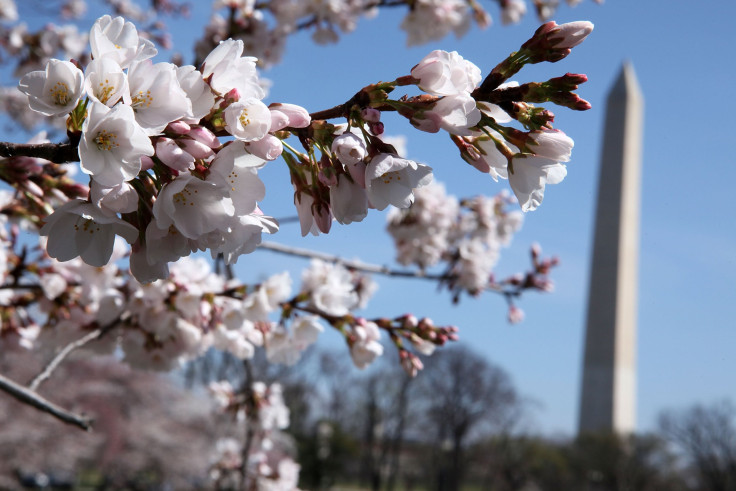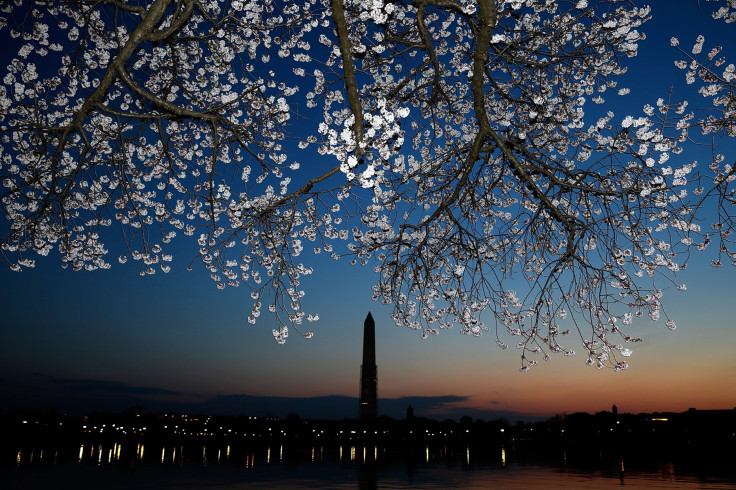When Is Cherry Blossom Season? Earliest Recorded Blooms In DC Festival Signal Climate Change

It’s almost cherry blossom season in Washington, D.C., and tourists are gearing up to head down to the nation's capital to observe the annual nature show. The National Park Service released the cherry blossom’s peak bloom dates Wednesday, but the announcement had rather disconcerting connotations for the environment.
The National Park Service said the peak bloom was forecast for March 14 through March 17, the earliest peak bloom season ever recorded.
Peak blooms have been arriving earlier and earlier in recent years, a side effect of a climate that is warming especially rapidly in Washington, D.C. Peak blooms refer to the period when 70 percent of the Yoshino cherry blossoms are fully open, and according to the Environmental Protection Agency, the date is an indicator of global warming trends. This is because the heat breaks the trees winter dormancy, causing them to bloom earlier.

The record for earliest peak blooms was Mar. 15, 1990. In 2016, environmental officials voiced concerns because the peak bloom was set to occur as early as March 23. Over the past 96 years, the average peak date occurred April 4, according to the Environmental Protection Agency.
The forecast is always subject to change depending on local weather conditions, the National Park Service noted. However, blooming season has started seven days earlier from 1970 to 1999. Weather station measurements in the D.C. area showed that since 1946, temperatures increased in the area at double the global rate. If this trend continues and emissions don’t slow, spring blooming could advance by as much as month by the end of the 21st century, according to the National Park Service.
The annual cherry blossom festival began in 1912 when Japan gifted thousands of the trees to the United States. The blossoms have attracted around 1.5 million visitors and generated about $150 million in revenue from tourism in the area each year.
© Copyright IBTimes 2025. All rights reserved.






















